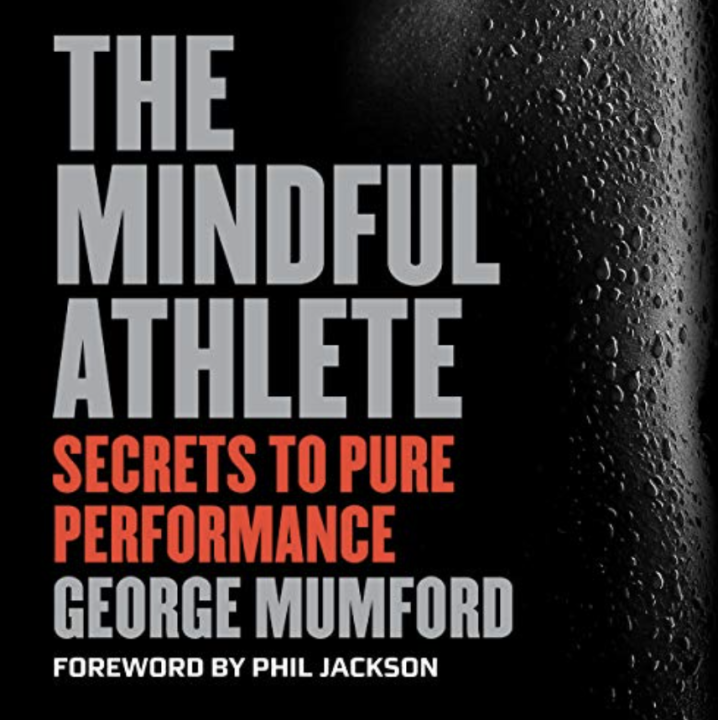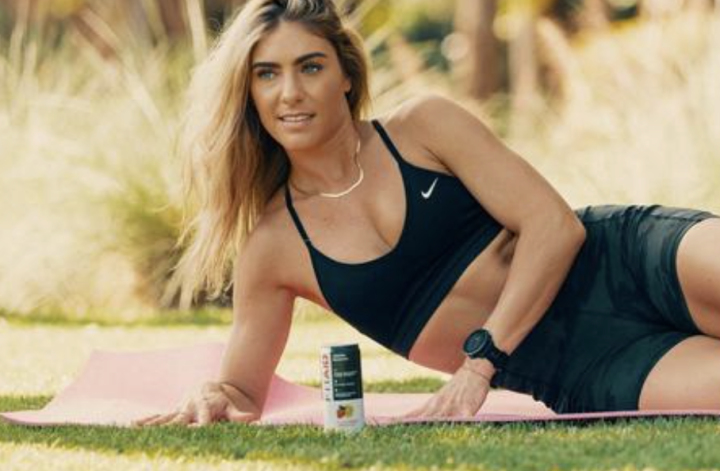What's for dinner? How about...
Vegan Tofu Parmesan!
We have someone on our sales team, who shall not be named, who will ONLY order "Chicken Parm" if he eats out at a restaurant. We are challenging him to change it up and give this Vegan Tofu Parmesan Recovery Meal recipe a try for his next make-at-home meal! Best enjoyed with an ice-cold FITAID. Let us know on social @FITAID how it turned out! Post a photo and tag us to be shared on our stories! Enjoy!
Ingredients: (serves 2x people)
- 34 ounce extra firm or super-firm tofu cut into 4 thin pieces*
- 4 cups low-sodium vegan chicken broth
- 0.5 cup all-purpose flour
- 2 teaspoon Italian seasoning optional
- 1 teaspoon salt
- Black pepper to taste
- 2 tablespoon cornstarch
- 1.5 cup panko breadcrumbs*
- 0.67-1 cup olive oil
- 2 cup marinara sauce
- 1 cup vegan mozzarella cheese
- 1 cup shredded vegan Parmesan
- 0.5 cup chopped fresh basil and/or parsley for serving
Instructions (short):
- Marinate the tofu “cutlets” for at least 30 minutes, preferably overnight.
- The next day, prep the 3-step breading ingredients.
- Dredge both sides of the tofu in the flour, “egg” wash, and breadcrumbs.
- Pan fry the tofu in a hot skillet on each side for 4 to 5 minutes, or until golden brown. Transfer the tofu to a paper towel lined plate to absorb any excess oil.
- Place the tofu in a baking dish and top each “cutlet” with marinara sauce, vegan mozzarella cheese, and vegan parmesan cheese.
- Bake on the middle rack for 15 to 20 minutes, or until melted and bubbly.
- Serve warm with fresh herbs.
Instructions (long):
-
-
Marinate: Slice tofu and soak in liquid covered for at least 30 min, or overnight for stronger flavor. Remove the tofu from the marinade and place on a plate; reserve 1/3 cup of the marinade, and discard the rest.
-
Prep: Preheat the oven to 450F and grease or line a baking sheet. Then, prepare the three-step breading process:
-
Flour: Place the flour, Italian seasoning (if using), salt, and pepper on a shallow plate. Mix well.
-
“Egg” Wash: Whisk the reserved 1/3 cup (80 ml) of the tofu marinade with the cornstarch in a shallow bowl or plate with a lip.
-
Breading: Place the breadcrumbs on a shallow plate.
-
Prepare the Tofu: dredge both sides of the tofu in the flour mixture first, then briefly in the “egg” mixture, then into the breadcrumbs until evenly coated. Set aside and repeat with the remaining pieces of tofu
-
Pan-Fry: Warm the oil in a large skillet or sauté pan over medium heat. Add the breaded tofu to the oil and fry for 4 to 5 minutes on each side, or until golden brown. Transfer the tofu to a plate lined with a paper towel briefly, to absorb the excess oil.
-
Bake: Transfer the tofu cutlets to the prepared baking tray and top each cutlet with 1/4 cup (60 ml) of sauce, 2 tablespoons of mozzarella cheese, and 1 tablespoon of vegan Parmesan. Bake in the middle rack of the oven for 15 to 20 minutes, or until the cheese is melted and bubbly.
-
Serve: Transfer to serving plates and top with fresh herbs. Serve warm; leftovers will keep in the fridge for up to 3 days and are best reheated in the oven, toaster oven, or air fryer.
-
Substitutions and Variations for this Vegan Tofu Parmesan Recovery Recipe
- Gluten-Free option: Use a gluten-free 1:1 flour blend and gluten-free panko breadcrumbs.
- Low oil option: In order to get a nice golden crust on the tofu breading, you do need to use at least a small amount of oil. If you’d like to lower the amount of oil you need, use a nonstick ceramic pan and lightly spray the tofu cutlets with cooking spray to give them color.
- Baked variation: Prepare the tofu cutlets as written, then spray both sides generously with spray oil. Place the cutlets on a prepared baking sheet and bake plain for 15-17 minutes before removing from the oven, flipping, topping with sauce, and returning to the oven to bake for an additional 15-20 minutes, or until the cheese is melted. You can also make this recipe in the air-fryer with similar “bake” times, but may need to reduce the cook time by 3-5 minutes per side.
- Tofu alternative: If desired, make this tofu parmesan using a vegan chicken cutlet like Gardein’s Chik’n Scallopini. If you go this route, you do not need to marinate the faux meat.
Additional things to note:
How to reheat Vegan Tofu Parmesan:
To reheat in the oven, bake for 10 minutes at 350F or until warmed through and slightly crispy again. Reheating in the toaster oven or air fryer should be similar in timing.
Can I freeze Tofu?
NO. Freezing this tofu parmesan is not recommended. Not only would this make the breaded tofu soggy, but would also change the texture of the tofu.
Originally posted on https://frommybowl.com/vegan-tofu-parmesan/
We are challenging him to change it up and give this vegan Tofu Parmesan a try for his next recovery meal! Best enjoyed with an ice-cold FITAID.
Looking for something good to read on your Recovery Sunday?
Pick up "Shoe Dog"
...or just read this synopsis while sipping an ice-cold FITAID to impress your friends 😉
"Shoe Dog" is a memoir written by Phil Knight, the co-founder of Nike. The book chronicles the history of the company, from its early days as Blue Ribbon Sports to its eventual transformation into one of the most recognizable brands in the world.
Knight provides an intimate look into the company's early struggles, including the challenges of importing shoes from Japan, as well as the difficulties of building a brand and a loyal customer base. He also discusses the company's many successes, including the creation of the Air Jordan line and the use of innovative marketing tactics to reach a global audience.
One of the strengths of the book is Knight's honest and introspective writing style. He is candid about the mistakes he made along the way, including his struggles with personal relationships and the intense pressure he felt to succeed. He also offers valuable insights into the business world, including the importance of taking risks and learning from failure.
Another highlight of the book is its vivid descriptions of the many colorful characters that Knight encountered on his journey, from his early business partners to the athletes and celebrities who helped to build the Nike brand.
Overall, "Shoe Dog" is a well-written and engaging memoir that offers a fascinating glimpse into the early days of Nike and the challenges of building a successful business. It is a must-read for anyone interested in the history of the company or in entrepreneurship in general.
“Shoe Dog” is a memoir written by Phil Knight, the co-founder of Nike. The book chronicles the history of the company, from its early days as Blue Ribbon Sports to its eventual transformation into one of the most recognizable brands in the world.
Looking to flavor your Recovery Meal?
Perhaps your recipe calls for soy sauce - maybe changing up this ingredient is right for you... read on to learn more.
What is the difference between Coconut Amino and Soy Sauce?
Coconut aminos and soy sauce are both popular condiments used in various cuisines around the world. While they share some similarities in terms of flavor, they differ in terms of their ingredients and nutritional properties. Here are some pros and cons of coconut aminos and soy sauce, supported by scientific research and health articles:

Coconut Aminos:
Pros:
- Coconut aminos are a good source of amino acids, which are the building blocks of proteins. They contain 17 different types of amino acids, including essential ones that the body cannot produce on its own. (Source: https://www.ncbi.nlm.nih.gov/pmc/articles/PMC5735655/)
- Coconut aminos are low in sodium compared to soy sauce, which is beneficial for people with high blood pressure or those trying to reduce their salt intake. (Source: https://www.healthline.com/nutrition/coconut-aminos)
- Coconut aminos are gluten-free, soy-free, and dairy-free, making them a suitable alternative for people with food allergies or intolerances. (Source: https://www.medicalnewstoday.com/articles/coconut-aminos)
Cons:
- Coconut aminos are relatively high in natural sugars, particularly fructose, which may be an issue for people with diabetes or those on a low-carb or ketogenic diet. (Source: https://www.healthline.com/nutrition/coconut-aminos)
- Some brands of coconut aminos may contain added sugar or other ingredients, so it's important to read the labels carefully to ensure that you're getting a pure product. (Source: https://www.medicalnewstoday.com/articles/coconut-aminos)
 Soy Sauce:
Soy Sauce:
Pros:
- Soy sauce is a good source of umami, the fifth taste that enhances the flavor of food. It contains glutamic acid and other amino acids that give it a savory, meaty flavor. (Source: https://www.sciencedirect.com/science/article/pii/S1878450X16300078)
- Soy sauce is rich in antioxidants, which may help protect the body against damage from free radicals. (Source: https://www.ncbi.nlm.nih.gov/pmc/articles/PMC4486441/)
- Soy sauce contains isoflavones, which are plant compounds that have been linked to a reduced risk of heart disease, osteoporosis, and certain types of cancer. (Source: https://www.ncbi.nlm.nih.gov/pmc/articles/PMC3257702/)
Cons:
- Soy sauce is high in sodium, which can increase blood pressure and raise the risk of heart disease. People with high blood pressure or kidney problems should limit their intake of soy sauce. (Source: https://www.medicalnewstoday.com/articles/319937)
- Soy sauce contains gluten, which can be problematic for people with celiac disease or gluten intolerance. (Source: https://www.medicalnewstoday.com/articles/319937)
- Some brands of soy sauce may contain added preservatives, or other ingredients that can be harmful to health, so it's important to choose a high-quality, pure product. (Source: https://www.medicalnewstoday.com/articles/319937)
All this sauce talk making you thirsty? FITAID is the best drink for pairing with coconut aminos OR soy sauces and your post-workout routines. It contains no artificial sweeteners, such as sucralose or aspartame, and instead uses clean caffeine from green tea extract. The electrolytes and vitamins in FITAID, such as turmeric, magnesium, potassium, vitamin C, biotin, vitamin D3, quercetin, CoQ10, calcium, vitamin E, glucosamine, BCAAs, L-arginine, L-glutamine, green tea extract, and thiamin, help aid muscle recovery and support overall health and wellness.
In summary, both coconut aminos and soy sauce have their pros and cons, and the choice between the two will depend on personal preference and dietary requirements. When choosing either condiment, it is important to opt for high-quality, pure products that are free from additives.
Both coconut aminos and soy sauce have their pros and cons, and the choice between the two will depend on personal preference and dietary requirements. When choosing either condiment, it is important to opt for high-quality, pure products that are free from additives and artificial ingredients.
What's for dinner? How about...
Cauliflower Fried Rice
Looking for the fried rice without the rice?
Try this Cauliflower Fried Rice recipe!
Ingredients
- 12 oz. bag cauliflower rice (frozen)
- 4 cups stir fry veggies (frozen)
- 2 Tbsp sesame oil
- 1 Tbsp onion flakes
- 1 tsp garlic powder
- 1/2 tsp crushed red pepper
- 2 large eggs
- 1/4 cup tamari or soy sauce
- salt/pepper to taste
Instructions
-
Pour 1 Tbsp sesame oil into a skillet over medium heat.
-
Add the cauliflower rice and vegetables, cooking until fully thawed.
-
Cover and continue to cook until the veggies are soft, stirring occasionally.
-
Add the remaining sesame oil, onion flakes, garlic powder, and crushed red pepper.
-
Stir fry everything together.
-
Make a "well" or hole in the middle of the pan.
-
Add in both eggs and scramble.
-
Once the eggs are scrambled, mix into the cauliflower rice mixture.
-
Pour coconut amino or soy sauce over everything, serve, and crack open an ice-cold FITAID and enjoy!
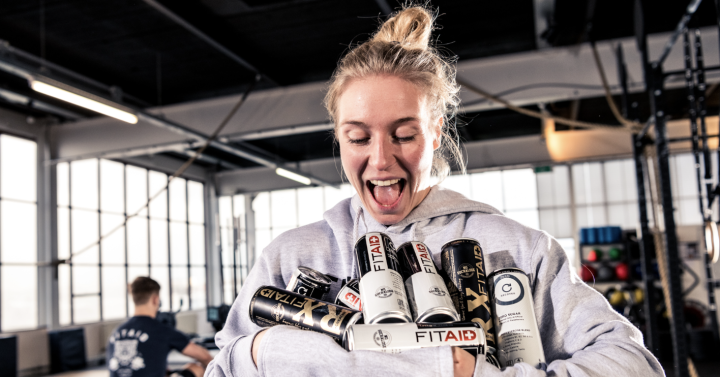
Originally posted on https://www.jaroflemons.com/the-best-cauliflower-fried-rice/ <3
Looking for the fried rice without the rice? Try this Cauliflower Fried Rice recipe! This 10-minute recipe is easy to make, gluten-free, dairy-free, vegetarian, and great for the entire family.
"The Mindful Athlete: Secrets to Pure Performance" is a book written by George Mumford, a mindfulness teacher who has worked with athletes and teams in the NBA, NFL, and other professional sports leagues. The book provides insights and practical strategies for using mindfulness to enhance athletic performance and promote overall well-being.
The book is divided into three parts.
In Part One, Mumford provides an overview of mindfulness and its application to sports. He describes how mindfulness can help athletes reduce stress and anxiety, increase focus and awareness, and enhance performance on the field or court.
In Part Two, Mumford offers a step-by-step guide to developing a mindfulness practice. He provides practical exercises and techniques for cultivating mindfulness, including breathing techniques, body scans, and visualization practices. He also describes how to apply mindfulness to specific aspects of sports performance, such as goal setting, injury recovery, and competition.
In Part Three, Mumford offers insights from his work with professional athletes, including Michael Jordan, Kobe Bryant, and Shaquille O'Neal. He describes how mindfulness helped these athletes achieve peak performance and navigate challenges on and off the court.
Overall, "The Mindful Athlete" is a practical and insightful guide to using mindfulness to enhance athletic performance and well-being. It provides practical exercises, strategies, and insights that can be applied by athletes at any level of experience. The book is written in an accessible and engaging style, making it a valuable resource for anyone interested in using mindfulness to support their athletic goals.
“The Mindful Athlete: Secrets to Pure Performance” is a book written by George Mumford, a mindfulness teacher who has worked with athletes and teams in the NBA, NFL, and other professional sports leagues. The book provides insights and practical strategies for using mindfulness to enhance athletic performance and promote overall well-being
Evolving Fitness Goals
The Importance of Flexibility, Patience, and Self-Care
Fitness goals are not static. They evolve as our lives change, as we face new health challenges, and as we gain new perspectives on our bodies. In order to stay motivated and maintain progress, it's critical to be flexible, patient, and kind to ourselves. This blog article will discuss the sports psychology around evolving fitness goals, the importance of remaining positive, and some easy ways to get fitness into your life.
Sports Psychology and Evolving Fitness Goals:
The first step in embracing evolving fitness goals is to understand the sports psychology behind it. Athletes of all levels experience changes in their performance over time, and the most successful ones are those who are able to adapt and remain positive. When we face life situations or health changes, it can be easy to feel discouraged or overwhelmed, but it's important to remember that setbacks are a natural part of the process. By acknowledging and accepting them, we can move forward with renewed energy and focus.
Staying Positive and Motivated:
Maintaining a positive attitude is critical for staying motivated, and the science supports this. Research has shown that a positive mental attitude can improve endurance, increase energy levels, and enhance overall performance. So, how do we cultivate a positive mindset? One key strategy is to focus on the process, rather than the outcome. By setting small, achievable goals and celebrating each small win along the way, we can stay motivated and build momentum.
Flexibility, Patience, and Self-Care:
Flexibility, patience, and self-care are key ingredients in any fitness journey, and they become even more important as our goals evolve. When we experience good days, it's important to enjoy them and feel proud of our accomplishments. When we experience bad days, it's important to be kind to ourselves and remember that setbacks are temporary. And, regardless of how we're feeling on a given day, it's critical to prioritize self-care. This might mean taking a rest day, treating ourselves to a massage, or simply taking a few minutes to meditate and connect with our bodies.

5 Easy Ways to Get Fitness into Your Life:
Getting fitness into your life doesn't have to be complicated or time-consuming. Here are five easy ways to get started:
- Take a walk: Walking is a great low-impact exercise that can be done almost anywhere. Try taking a brisk walk during your lunch break or after dinner.
- Try a new activity: Trying something new can be a great way to shake up your routine and stay motivated. Sign up for a dance class, try a new sport, or take a yoga class.
- Set a small goal: Setting a small, achievable goal can be a great way to build momentum and stay motivated. This might be something as simple as doing 10 push-ups a day or running a mile in under 10 minutes.
- Use technology: Fitness apps and wearable technology can be great tools for tracking progress and staying motivated. Try using a fitness app to set goals and track your workouts.
- Find a buddy: Working out with a friend can be a great way to stay accountable and have fun. Try finding a workout buddy to go for walks, hit the gym, or take a class with.
Evolving fitness goals are a natural part of the process, and it's important to be flexible, patient, and kind to ourselves as we navigate them. By remaining positive, prioritizing self-care, and taking small steps towards our goals, we can stay motivated and build momentum. With these strategies in mind, anyone can find ways to get fitness into their life and embrace the ever-evolving experience of our bodies.
Along your fitness journey, FITAID drinks are a great option for post-workout recovery, as they contain no artificial sweeteners and have clean caffeine from green tea extract. Additionally, the vitamins in FITAID, such as turmeric, glucosamine, vitamin B12, and BCAAs, can help aid muscle recovery by reducing inflammation from everyday stress, improving joint health, and supporting muscle function.
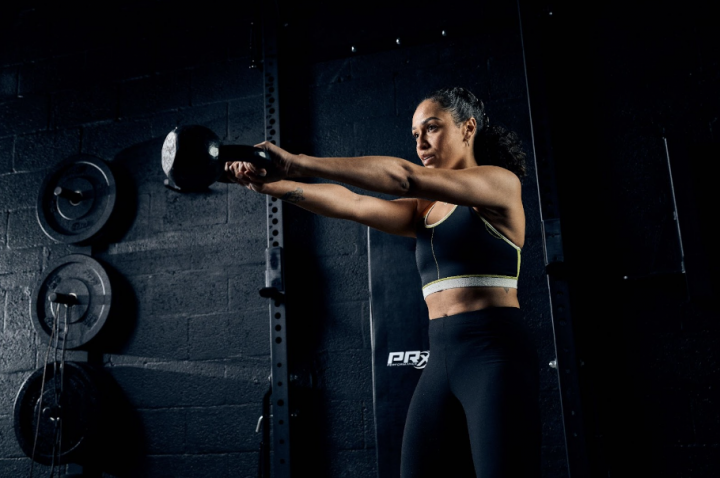
Want to learn more about how to navigate your evolving fitness goals?
Here are some scientific and further reading suggestions on the topic of evolving fitness goals and the importance of flexibility, patience, and self-care:
-
- "The role of self-compassion in exercise behavior" by Yijie Wang and colleagues, published in the Journal of Applied Biobehavioral Research. This study examines the role of self-compassion in exercise behavior and suggests that it may be an important factor in promoting exercise adherence and well-being.
- "Promoting Flexibility and Positive Emotions: A Pilot Study of a Yoga Program for People With Poststroke Disability" by Arlene Schmid and colleagues, published in the Journal of Rehabilitation Research and Development. This study examines the effects of a yoga program on flexibility and positive emotions in people with post-stroke disability.
- "The effects of mindfulness-based interventions on exercise performance" by Bernadette Murphy and colleagues, published in the Journal of Health Psychology. This study reviews the effects of mindfulness-based interventions on exercise performance and suggests that they may be a useful tool for enhancing exercise motivation and adherence.
- "Patience is a virtue: the role of patience in physical activity adherence" by Shaelyn Strachan and colleagues, published in the International Journal of Behavioral Nutrition and Physical Activity. This study explores the role of patience in physical activity adherence and suggests that it may be an important factor in maintaining long-term exercise habits.
- "Self-care strategies for physicians" by Adriaan Louw and colleagues, published in the Journal of Pain Research. This article provides practical self-care strategies for healthcare professionals, including exercise, stress management, and mindfulness practices.
- "The Mindful Athlete: Secrets to Pure Performance" by George Mumford, a book that explores the role of mindfulness in sports and physical activity and provides practical strategies for enhancing performance and well-being.
- "The Athlete's Way: Training Your Mind and Body to Experience the Joy of Exercise" by Christopher Bergland, a book that explores the science of exercise and happiness and provides practical strategies for developing sustainable exercise habits.
These resources provide scientific insights and practical strategies for promoting flexibility, patience, and self-care in the context of evolving fitness goals. By prioritizing these elements, individuals can better support their overall well-being and make it easier to achieve and maintain fitness goals over the long term.
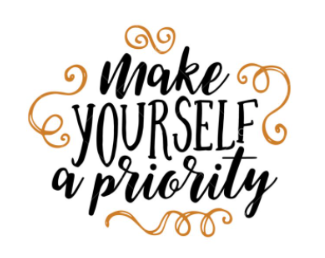
Flexibility, patience, and self-care are key ingredients in any fitness journey, and they become even more important as our goals evolve. When we experience good days, it’s important to enjoy them and feel proud of our accomplishments. When we experience bad days, it’s important to be kind to ourselves and remember that setbacks are temporary. And, regardless of how we’re feeling on a given day, it’s critical to prioritize self-care. This might mean taking a rest day, treating ourselves to a massage, or simply taking a few minutes to meditate and connect with our bodies.
Yes, Self Care is Scientifically linked to your Fitness Goals.
Self-care is critical for supporting physical and mental health, reducing the risk of injury, and promoting sustainable habits that support fitness goals. By prioritizing self-care, individuals can better support their overall well-being and make it easier to achieve and maintain fitness goals over the long term.
If you take care of your mind, it will thank you back.
Self-care is an important aspect of maintaining physical, mental, and emotional health. It involves taking deliberate actions to care for oneself and prioritize one's own needs. There are many ways to express self-care, and some examples include:
-
- Prioritizing sleep: Getting enough sleep is critical for maintaining good physical and mental health. Set a regular sleep schedule, create a calming sleep environment, and try to get 7-9 hours of sleep each night.
- Engaging in physical activity: Regular physical activity can boost mood, reduce stress, and improve overall health. Find a physical activity that you enjoy and that fits your lifestyle, whether it's going for a walk, practicing yoga, or lifting weights.
- Eating a healthy diet: Eating a balanced diet rich in fruits, vegetables, whole grains, and lean protein can provide essential nutrients and improve overall health. Avoid highly processed foods and aim to eat a variety of nutrient-dense foods.
- Taking time for relaxation: Relaxation can help reduce stress and promote a sense of calm. This might include practices such as meditation, deep breathing (including Wim Hoff breathing), or taking a warm bath.
- Spending time with loved ones: Spending time with friends and family can help foster a sense of connection and support. Make time for social activities that bring you joy and help you feel connected to others.
- Pursuing hobbies and interests: Engaging in activities that bring you pleasure and fulfillment can help reduce stress and improve mood. This might include activities such as reading, painting, or playing music.
- Seeking professional support: If you're struggling with physical or mental health issues, seeking professional support can be a key aspect of self-care. This might include talking to a therapist, consulting with a healthcare provider, or seeking support from a support group.

Self-care is critical for achieving and maintaining fitness goals for several reasons. Here are a few examples:
-
- Recovery: Rest and recovery are essential components of any fitness program. Without adequate rest and recovery time, the body can become fatigued and prone to injury. Self-care practices, such as getting enough sleep, practicingstress management, and engaging in gentle exercise or stretching, can help facilitate recovery and prevent burnout.
- Motivation: Self-care practices can help boost motivation and energy levels. When we feel good physically and mentally, we are more likely to have the motivation and energy to exercise and pursue our fitness goals.
- Injury prevention: Self-care practices, such as stretching and mobility exercises, can help reduce the risk of injury by improving flexibility and range of motion.
- Mental health: Physical activity can have positive effects on mental health, but it's important to also prioritize self-care practices that support mental health. Engaging in stress-management techniques, practicing self-compassion, and seeking support from a mental health professional when needed can help support overall well-being and make it easier to stay committed to fitness goals.
- Sustainable habits: Self-care practices can help support the development of sustainable habits that promote long-term fitness and health. By prioritizing self-care, individuals can learn to tune in to their own needs, manage stress, and find joy in physical activity, all of which can support long-term success.

FITAID is a great drink for self care and post-workout routines. It contains no artificial sweeteners, such as sucralose or aspartame, and instead uses clean caffeine from green tea extract. The electrolytes and vitamins in FITAID, such as turmeric, magnesium, potassium, vitamin C, biotin, vitamin D3, quercetin, CoQ10, calcium, vitamin E, glucosamine, BCAAs, L-arginine, L-glutamine, green tea extract, and thiamin, help aid muscle recovery and support overall health and wellness.
Want to learn more?
Here are a few scientific articles and resources on self-care:
-
- "Self-care for healthcare professionals: a review" by Kristin Neff and Chris Germer, published in the Journal of Clinical Psychology in Medical Settings. This article reviews the importance of self-care for healthcare professionals, including the challenges they face and strategies for promoting self-care.
- "The science of self-care" by Janice Kiecolt-Glaser, published in Perspectives on Psychological Science. This article reviews the science behind self-care and its effects on physical and mental health.
- "A randomized controlled trial of a self-guided, multimedia, stress management and resilience training program" by Lynn W. Panton and colleagues, published in the Journal of Occupational Health Psychology. This study examines the effectiveness of a self-guided stress management program on stress and resilience.
- "Self-care and burnout among nurses: a comparison of working in acute care hospital settings and community settings" by Emily Seto and colleagues, published in Health and Social Care in the Community. This study compares levels of self-care and burnout among nurses working in different healthcare settings.
- "The power of self-compassion" by Kristin Neff, a book that explores the science of self-compassion and its importance for physical and mental health.
- "The Mayo Clinic Guide to Stress-Free Living" by Amit Sood, a book that provides practical strategies for reducing stress and promoting self-care.
These resources provide scientific insights and practical strategies for promoting self-care and improving overall well-being.

Self-care is critical for supporting physical and mental health, reducing the risk of injury, and promoting sustainable habits that support fitness goals. By prioritizing self-care, individuals can better support their overall well-being and make it easier to achieve and maintain fitness goals over the long term.
What is Wim Hof Breathing?
Wim Hof breathing is a method of breathing that was popularized by Wim Hof, also known as the Iceman. The Wim Hof breathing method, also known as the "Wim Hof Method" or "WHM," was developed by Wim Hof, a Dutch extreme athlete who holds multiple world records for his ability to withstand extreme cold. This method involves breathing exercises that are designed to improve overall health, boost the immune system, and enhance recovery after exercise.
What is the science behind Wim Hof breathing?
The science behind Wim Hof breathing is rooted in the concept of controlled hyperventilation, which involves rapidly breathing in and out in a specific pattern. This type of breathing causes a physiological response in the body that is thought to have a positive impact on overall health and well-being.
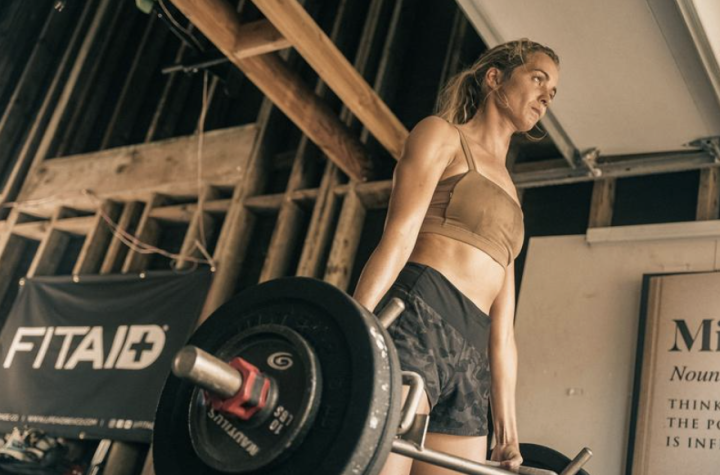
How did Wim Hof come up with this technique?
Wim Hof breathing is said to have originated from Wim Hof's own experiences with breathing exercises and cold therapy. Wim Hof has claimed that his methods have been effective in treating a variety of conditions, including anxiety, depression, and chronic pain.
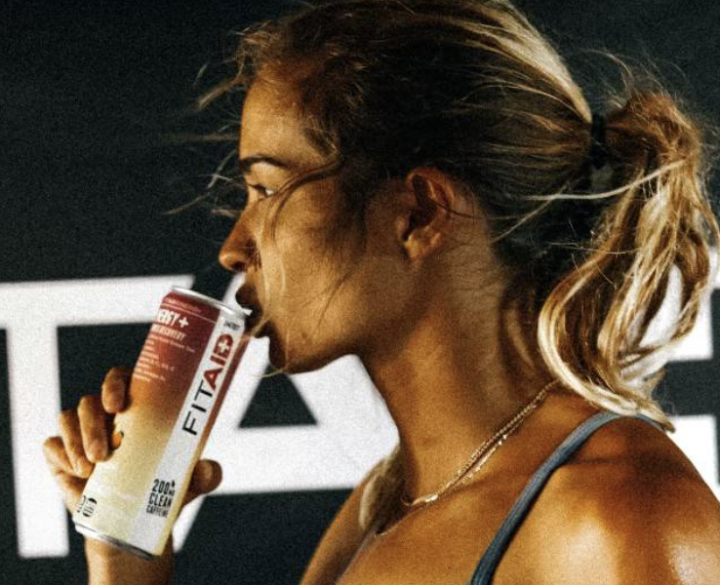
Is Wim Hof breathing effective?
While the effectiveness of Wim Hof breathing is still being studied, some preliminary research has suggested that it may have a positive impact on the body's immune system and overall health. However, more research is needed to fully understand the effects of Wim Hof breathing.
Wim Hof breathing is typically recommended for individuals who are looking to improve their overall health, boost their immune system, and enhance recovery after exercise. It is important to note that Wim Hof breathing should not be attempted without proper guidance, as improper breathingtechniques can lead to adverse effects.
Who does Wim Hof breathing?
There are a number of famous athletes who use Wim Hof breathing as a part of their recovery routine. These athletes believe that Wim Hof breathing can help to enhance their overall health and improve their performance.
There are several famous individuals who have publicly endorsed or practiced the Wim Hof Method, including:
-
- Laird Hamilton: Surfing legend Laird Hamilton is a strong advocate for the Wim Hof Method and has used it to prepare for big wave surfing and other extreme athletic events.
- Tim Ferriss: Author, podcaster, and self-experimenter Tim Ferriss has written about the Wim Hof Method in his books and has used it to manage stress and improve his sleep.
- Tony Robbins: Motivational speaker and author Tony Robbins has praised the Wim Hof Method and has incorporated it into his own daily routine.
- Rick Rubin: Music producer Rick Rubin has also spoken about his use of the Wim Hof Method as a tool for managing stress and improving his mental clarity.
It's worth noting that while the Wim Hof Method has gained popularity in recent years, it is not a substitute for medical treatment or professional advice. If you have any health concerns, it's important to consult with a qualified healthcare provider before trying any new health or wellness practices.
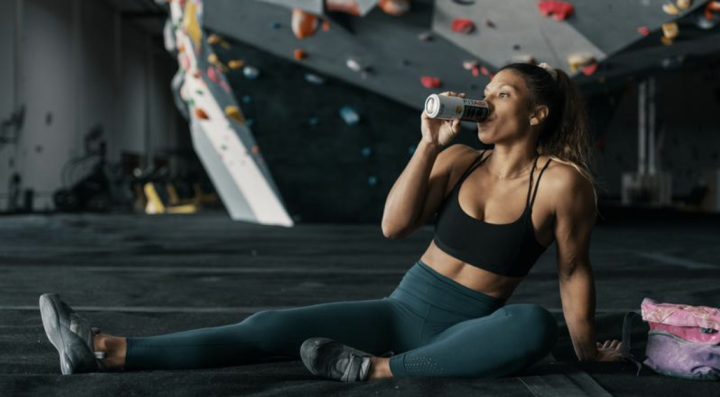
Take a breath and take a sip
FITAID is a drink that is designed to help support recovery after exercise. It contains clean caffeine from green tea extract, which can help to enhance mental focus and alertness. Additionally, FITAID contains vitamins such as turmeric, glucosamine, vitamin B12, and BCAAs that can help to support muscle recovery. These ingredients are carefully selected for their potential health benefits and are included in FITAID in the form of clean, whole-food supplements.
While Wim Hof breathing and FITAID are not directly related, both can play a role in supporting recovery after exercise. Wim Hof breathing can help to enhance overall health and boost the immune system, while FITAID can help to support muscle recovery and enhance mental focus. When used together, these practices may help individuals to achieve their health and fitness goals more effectively.
In conclusion, Wim Hof breathing is a method of breathing that has been shown to have potential health benefits. While more research is needed to fully understand the effects of Wim Hof breathing, it may be beneficial for individuals who are looking to enhance their overall health and boost their immune system. Additionally, using FITAID as a post-workout recovery drink can help to support muscle recovery and enhance mental focus.

Wim Hof breathing is a method of breathing that was popularized by Wim Hof, also known as the Iceman. This method involves breathing exercises that are designed to improve overall health, boost the immune system, and enhance recovery after exercise.
Bouncing back to the Gym after an Injury:
Returning to fitness after an injury can be a difficult and frustrating process. It’s important to approach the process with care, patience and the right support, in order to successfully achieve your fitness goals.
What is the best way to start working out again after having an injury?
The best way to start working out again after an injury is to gradually progress back into physical activity. It’s important to listen to your body and avoid pushing yourself too hard, too soon. Start with light and low-impact exercises, such as walking or gentle stretching, and gradually increase the intensity and duration as you feel comfortable. It’s also important to work with a physical therapist or healthcare professional to develop a safe and effective rehabilitation plan that takes into account your specific injury and goals.
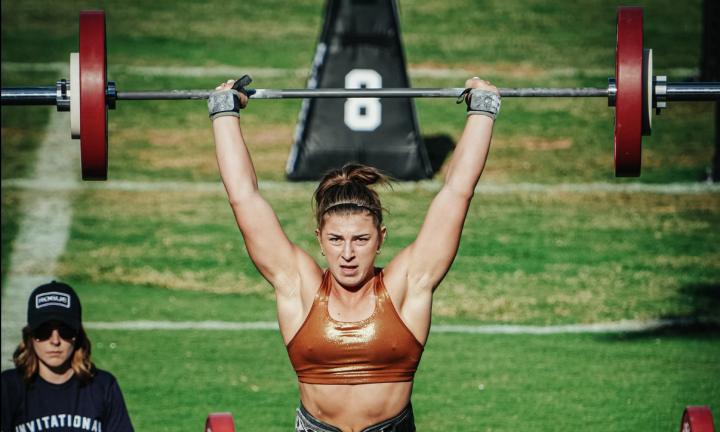
What is the science behind the importance of working out after getting injured?
Research has shown that staying active after an injury can help to reduce pain and improve physical function. Regular physical activity can also help to reduce the risk of developing chronic conditions, such as arthritis, that are associated with a sedentary lifestyle. Additionally, exercise can have a positive impact on mental health, by reducing stress and improving mood.
What is the best way to mentally prepare for working out again?
that take into account the time and effort required to recover from an injury. Celebrate your progress and focus on the benefits you’re gaining, rather than the setbacks or setbacks you may encounter along the way.
When should people start working out again after getting an injury?
The timing of starting to work out again after an injury depends on the type and severity of the injury. It’s important to follow the advice of your healthcare professional, and to only begin physical activity once you have received clearance to do so. It’s also important to progress slowly and to listen to your body, avoiding activities that cause pain or discomfort.
Inspirational Quotes to help you approach starting to work out again:
- “Success is not final, failure is not fatal: it is the courage to continue that counts.” - Winston Churchill
- “Fall seven times, stand up eight.” - Japanese Proverb
- “The greatest glory in living lies not in never falling, but in rising every time we fall.” - Nelson Mandela
- “Don’t watch the clock; do what it does. Keep going.” - Sam Levenson
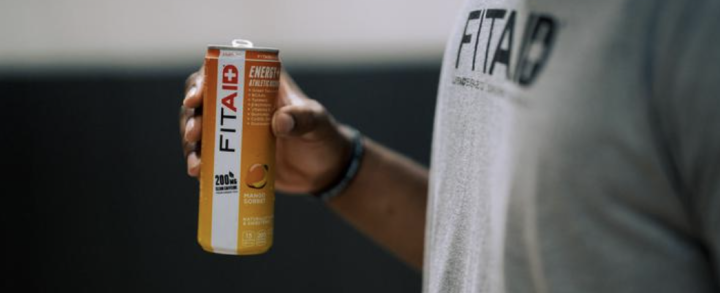
Drink Smart
FITAID drinks can be a great choice for recovery and post-workout routines, as they contain no artificial sweeteners, no sucralose or aspartame or Ace-K, and have clean caffeine from green tea extract. The vitamins in FITAID, such as turmeric, glucosamine, vitamin B12 and BCAAs, help to aid muscle recovery and improve overall health. Scientific research supports the use of these ingredients for recovery and improved athletic performance.
In addition to FITAID- here are some tips and tricks and some articles that provide information on physical therapy tips and tricks to stay healthy and prevent injury during workouts:
- Warm-up properly: Before starting your workout, warm up for at least 5-10 minutes with light cardio exercises such as jogging, jumping jacks, or jumping rope.
- Strengthen core muscles: Strong core muscles help prevent injury and improve overall performance. Incorporate exercises such as planks, bridges, and bird-dogs into your workout routine.
- Stretch regularly: Regular stretching can help improve flexibility and prevent injury. Hold each stretch for 20-30 seconds and make sure to stretch both before and after your workout.
- Use proper form: Using proper form during exercises can prevent injury and help you get the most out of your workout. If you're not sure how to do an exercise correctly, ask a personal trainer or physical therapist for help.
- Focus on balance and stability: Incorporate balance and stability exercises into your workout routine, such as single-leg squats, lunges, and balance board exercises.
- Listen to your body: If you feel pain or discomfort during your workout, stop and take a break. Don't push through pain, as this can lead to injury.
- Gradually increase intensity and volume: Gradually increasing the intensity and volume of your workout can help prevent injury. Start with lighter weights and shorter workouts and gradually increase as your body adjusts.
- Cross-train: Cross-training, or incorporating a variety of exercises into your routine, can help prevent injury by reducing stress on any one area of your body.
- Get enough rest: Rest and recovery are an important part of preventing injury. Make sure to get enough sleep and take breaks when your body needs them.
- Work with a physical therapist: A physical therapist can help you create a safe and effective workout plan, teach you proper form and technique, and help you recover from injury.Articles:These articles provide information on proper warm-up techniques, ways to prevent overuse injuries, and injury-prevention exercises to add to your workout routine. Additionally, they also touch upon the importance of rest, recovery and listening to your body.
-
- "5 Physical Therapy Tips for Staying Injury-Free While Working Out" by Chelsea Bowlin, published on Healthline.com.
- "Physical Therapy Tips to Prevent Workout Injuries" by Amanda Weiss, published on Verywellfit.com
- "7 Physical Therapy Techniques to Prevent Workout Injuries" by Casey Bond, published on Shape.com
- "The Physical Therapist’s Guide to Staying Injury-Free During Workouts" by Jordan Metzl, MD, published on Runner's World
- "Expert Physical Therapy Tips for Staying Injury-Free" by Nick English, published on Breakingmuscle.com
Pro-Recovery Injuries
Here is a list of some professional athletes who have faced career-ending injuries who were able to bounce back to accomplish major
- Kobe Bryant (Basketball) - Suffered a torn Achilles in 2013 but returned to lead the Lakers to two more championships.
- Tom Brady (Football) - Suffered a torn ACL in 2008 but went on to become one of the greatest quarterbacks in NFL history.
- Serena Williams (Tennis) - Suffered a life-threatening blood clot in 2011 but returned to win multiple Grand Slam titles.
- Adrian Peterson (Football) - Suffered a torn ACL and MCL in 2011 but returned to lead the NFL in rushing yards the following season.
- Alex Rodriguez (Baseball) - Suffered a hip injury in 2009 but returned to become one of the greatest power hitters in MLB history.
- Peyton Manning (Football) - Suffered multiple neck surgeries in 2011 but returned to lead the Denver Broncos to a Super Bowl victory in 2015.
- Lindsey Vonn (Skiing) - Suffered multiple knee injuries throughout her career but went on to become one of the greatest ski racers of all time.
- Michael Jordan (Basketball) - Suffered a broken foot in 1986 but returned to lead the Chicago Bulls to six championships.
- Rafael Nadal (Tennis) - Suffered multiple knee injuries throughout his career but has continued to win Grand Slam titles and dominate the tennis world.
- Maria Sharapova (Tennis) - Suffered a shoulder injury in 2008 but returned to win multiple Grand Slam titles and become one of the greatest tennis players of all time.
In conclusion, returning to fitness after an injury takes time, patience and the right support. Focus on your goals, stay positive and celebrate your progress, and you can successfully achieve your fitness goals!!!
It’s important to approach the process of returning to fitness with a positive and patient mindset. Surround yourself with supportive friends and family, and set realistic goals
What is Grounding?
Grounding, also known as earthing, is a wellness practice that involves connecting with the earth by barefoot exposure to the ground, or through other means such as using special mats or sheets. While some people may view it as "hippy stuff," the practice has a growing body of scientific evidence supporting its potential health benefits. These benefits include reducing inflammation, improving sleep, reducing stress, and promoting overall well-being. However, it's important to note that more research is needed to fully understand the effects of grounding and more conclusive evidence is required to support its health benefits.
The science behind grounding involves the transfer of electrons from the Earth to the body, which are believed to have a range of health benefits.
The idea behind grounding is that the earth has a negative electric charge, and our bodies have a positive charge due to the buildup of electrons from sources such as electronic devices, stress, and unhealthy diets. By connecting with the earth, grounding allows the transfer of electrons from the earth to our bodies, potentially neutralizing this positive charge and reducing inflammation and oxidative stress.
What can grounding do for you?
Research on grounding has shown promising results in areas such as possibility of reducing inflammation, improving sleep, reducing stress, and promoting overall well-being. For example, one study found that participants who grounded for just one hour had a significant decrease in levels of the stress hormone cortisol. Another study showed that grounding for just 30 minutes improved sleep and reduced pain and fatigue in people with chronic pain.
Is grounding good for post workout recovery?
Some studies have shown that grounding can help reduce oxidative stress and improve circulation, which can be especially beneficial for post-workout recovery.
To incorporate grounding into your post-workout routine, try going for a walk barefoot on natural surfaces such as grass, sand, or soil, or consider using an earthing mat or sheet to sleep on. To optimize the benefits of grounding, it is recommended to spend at least 30 minutes in direct contact with the Earth each day.
Science or Fad?
While there is some scientific evidence to support the health benefits of grounding, it is still a relatively new area of research and more studies are needed to fully understand its effects. Despite this, many people have reported positive experiences with grounding, including improved sleep, reduced pain and stress, and better overall health and wellbeing.
Famous athletes who are known to incorporate grounding into their routines include professional surfer Laird Hamilton and Ironman champion Chris McCormack.
FYI! Grounding is not related to the electrical wiring or grounding in a building.
Here are some scientific articles and studies that discuss the concept of grounding and its potential health benefits:
- "The effects of grounding (earthing) on inflammation, the immune response, wound healing, and prevention and treatment of chronic inflammatory and autoimmune diseases." - This study, published in the Journal of Inflammation Research, investigated the effects of grounding on inflammation and the immune response, and found that it had a significant impact on reducing inflammation and promoting wound healing.
- "Earthing: Health Implications of Reconnecting the Human Body to the Earth's Surface Electrons" - This review article, published in the Journal of Environmental and Public Health, provides an overview of the history, science, and potential health benefits of grounding.
- "Earthing: The Most Important Health Discovery Ever?" - This book by Clinton Ober, Stephen T. Sinatra, and Martin Zucker, provides a comprehensive look at the history, science, and potential health benefits of grounding.
- "The effect of grounding on chronic pain and stress in human subjects: A randomized controlled trial." - This study, published in the Journal of Alternative and Complementary Medicine, investigated the effects of grounding on chronic pain and stress, and found that it had a significant impact on reducing pain and stress levels.
In addition to grounding, incorporating recovery drinks like FITAID into your post-workout routine can help support muscle recovery and optimize your health. FITAID is a drink that is specifically designed to aid in recovery and contains no artificial sweeteners, with no sucralose or aspartame or Ace-K. Instead, it uses clean caffeine from green tea extract to help energize and revive the body. The vitamins in FITAID such as turmeric, glucosamine, vitamin B12 and BCAAs also play a key role in muscle recovery, helping to reduce inflammation and support the rebuilding of muscle tissue.
To incorporate grounding into your post-workout routine, try going for a walk barefoot on natural surfaces such as grass, sand, or soil, or consider using an earthing mat or sheet to sleep on. To optimize the benefits of grounding, it is recommended to spend at least 30 minutes in direct contact with the Earth each day.

